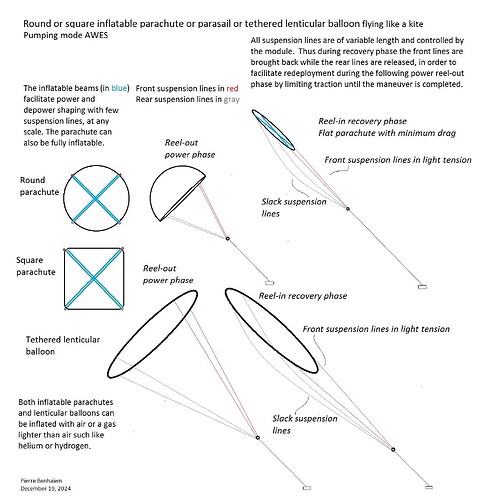Introduction
Parachute kites and parasails are investigated [3, 4, 5, 6 and 7] and could lead to a result in airborne wind energy system (AWES) field. However, and above all when large unities are used, difficulties occur concerning takeoff and landing, and also lift (without kite lifter) and shape control during depower reel-in phase.
Proposed solution
Inflatable beams are implemented for crosswind “Leading-Edge Inflatable Kites ” [1] in order to facilitate takeoff and landing maneuvers.
A similar solution is proposed for parachute kites or parasails for comparable reasons. An alternative solution is also proposed with a tethered lenticular balloon [2] for a same use, due to its interesting aerodynamic features and perhaps its ability to scale still more.
Another remarkable feature is the control of the suspensions lines with a module, allowing to modify the angle of attack, allowing also the parachute kite or balloon to be depowered during reel-in phase while some minimal lift is kept due to the low angle of attack resulting in the weight of the not held trailing edge, all this by using the front suspension lines to hold the kite with light tension, instead of the depower by central reversal [3, 4, 5, 6 and 7].
In addition usual means of stabilization for parasails (slots, central hole), stabilizers for lenticular balloons [2], are implemented.
A farm includes a few unities in order to fill the gap by delivering a permanent power.
Conclusions
Inflatable elements facilitate maneuvers of large AWES, hence more scalability.
